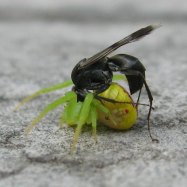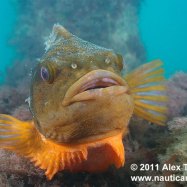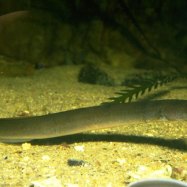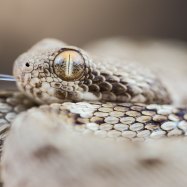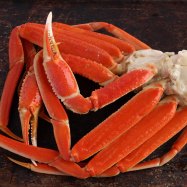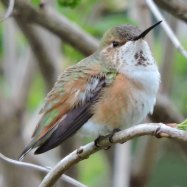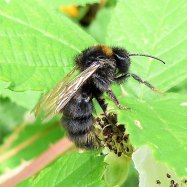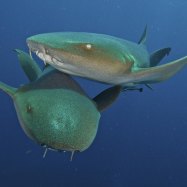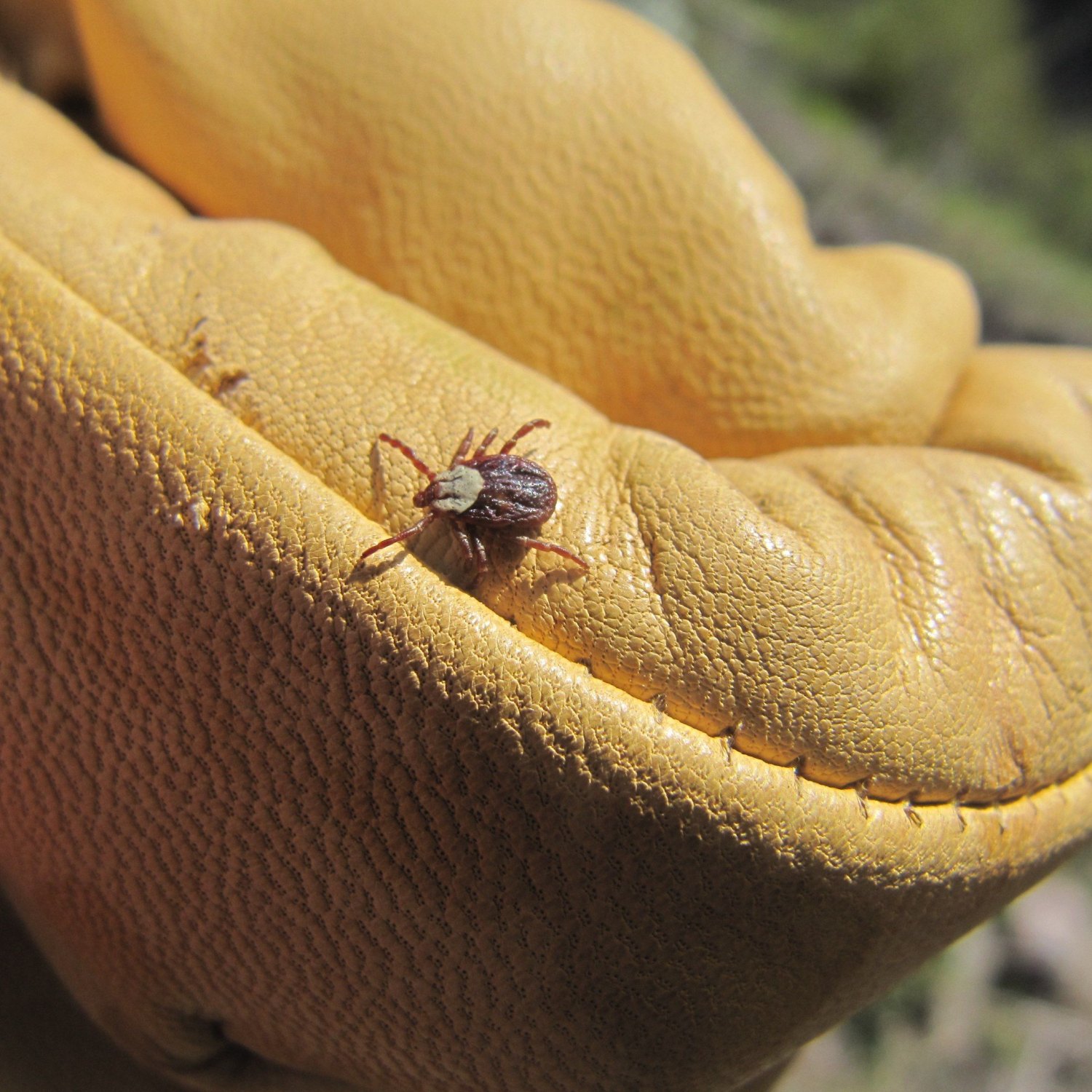
Pacific Coast Tick
3 to 4 mm (unfed), 10 to 12 mm (engorged)
The Pacific Coast Tick, found along the coast of the US, is a common pest with a flat and oval body. At 3-4mm unfed and 10-12mm engorged, it's easy to miss until it's too late. Protect yourself and pets from this Ixodidae tick by checking for them after outdoor activities and promptly removing any attached ticks. #tickprevention #petsafety
Animal Details Summary:
Common Name: Pacific Coast Tick
Kingdom: Animalia
Habitat: Coastal regions, forests, grasslands
The Hidden Jewel of the Pacific Coast - The Pacific Coast Tick
Nestled along the scenic coast of the Western United States lies a hidden gem – the Pacific Coast Tick. This small but mighty creature is often overlooked and overshadowed by its larger and more well-known tick relatives. However, what makes the Pacific Coast Tick truly special are its unique characteristics and habits, making it an important and fascinating animal in the world of entomology.Scientifically named Dermacentor occidentalis, the Pacific Coast Tick belongs to the Animalia kingdom, the Arthropoda phylum, and the Arachnida class Pacific Coast Tick. It is a member of the Ixodida order and the Ixodidae family, along with other tick species. This tick is commonly found in coastal regions, forests, and grasslands, making it a versatile and adaptable creature.
While many insects and arachnids have distinctive colorations and patterns, the Pacific Coast Tick stands out with its dark brown to reddish-brown color. Its body shape is flat and oval, measuring at a mere 3 to 4 mm when unfed, and approximately 10 to 12 mm when fully engorged. This seemingly small size may deceive some into thinking it is a harmless creature, but as its feeding method suggests, it is anything but.
The Pacific Coast Tick is a parasitic creature, meaning it feeds on the blood of other animals to survive. Its geographical distribution is limited to the Western United States, specifically along the Pacific coast, earning its common name - the Pacific Coast Tick. However, its country of origin is the United States, indicating that it is a native species and an essential part of the ecosystem in its natural habitat.
While some may find ticks repulsive and avoid them at all costs, the Pacific Coast Tick has a fascinating and intricate pattern that sets it apart from its peers Peregrine Falcon. Its body is adorned with an ornate blotchy pattern, with white and gray markings that make it a mesmerizing sight to behold. This unique appearance is not just for show, but it serves a purpose in the tick's survival.
The Pacific Coast Tick's pattern acts as camouflage, blending in with its surroundings to avoid detection from potential predators. This is especially crucial for its survival as they often prey on larger animals, and being discovered too soon could mean doom for the Pacific Coast Tick. This striking pattern is a combination of both function and beauty, making it a true hidden jewel of the Pacific Coast.
Despite its small size, the Pacific Coast Tick is a vital part of the ecosystem, and its role extends beyond just being a parasite. Ticks play a crucial role in maintaining the balance of their environment. As their primary food source is the blood of animals, they act as natural regulators, preventing overpopulation of their hosts. This, in turn, has a domino effect on the entire ecosystem, making the Pacific Coast Tick an important contributor to its surroundings.
Furthermore, the saliva of ticks contains anti-coagulants, making their bites difficult to detect and leading to their hosts unknowingly spreading them to other animals. While this may seem like a disadvantage, their saliva also has healing properties that help in treating some health conditions. Researchers are currently studying the potential of using tick saliva in wound healing and combating certain diseases. This highlights the untapped potential of the Pacific Coast Tick and the importance of further studies on this species.
In recent years, the Pacific Coast Tick has gained more attention due to its association with diseases such as Lyme disease and Rocky Mountain spotted fever. While these diseases are a cause for concern, it is worth noting that not all ticks carry disease-causing bacteria, and the chances of contracting an illness are relatively low. With proper precautionary measures and prompt removal of ticks when found attached to the skin, the risk of disease transmission can be greatly reduced.
Like all creatures, the Pacific Coast Tick also has its own unique way of adapting to its environment. One such adaptation is its ability to lay over 2,000 eggs at a time, ensuring the survival of its offspring in an unpredictable and constantly changing environment. Another notable adaptation is the paralysis that can occur in some hosts after a tick bite. This phenomenon, known as tick paralysis, is caused by a neurotoxin present in the tick's saliva, and it serves as a defensive mechanism to subdue larger hosts.
Aside from its role in maintaining a balanced ecosystem, the Pacific Coast Tick also plays a significant cultural role in some Native American communities. In some ancient traditions, ticks are seen as a symbol of attentiveness and emotional balance. They teach us to be vigilant, but not to let fear overpower us. Their small but mighty presence serves as a reminder to stay focused and attuned to our surroundings.
In conclusion, the Pacific Coast Tick may be a small and often misunderstood creature, but it holds a wealth of fascinating characteristics and plays a vital role in its environment. Its unique appearance, feeding habits, and adaptation strategies make it a hidden jewel of the Pacific coast. While it may be tempting to fear and avoid ticks, it is important to remember that they are an integral part of the ecosystem and deserve our respect and understanding. So, next time you come across a Pacific Coast Tick, take a moment to appreciate its beauty and the valuable role it plays in our world.

Pacific Coast Tick
Animal Details Pacific Coast Tick - Scientific Name: Dermacentor occidentalis
- Category: Animals P
- Scientific Name: Dermacentor occidentalis
- Common Name: Pacific Coast Tick
- Kingdom: Animalia
- Phylum: Arthropoda
- Class: Arachnida
- Order: Ixodida
- Family: Ixodidae
- Habitat: Coastal regions, forests, grasslands
- Feeding Method: Parasitic
- Geographical Distribution: Western United States
- Country of Origin: United States
- Location: Pacific coast of the United States
- Animal Coloration: Dark brown to reddish-brown
- Body Shape: Flat and oval
- Length: 3 to 4 mm (unfed), 10 to 12 mm (engorged)
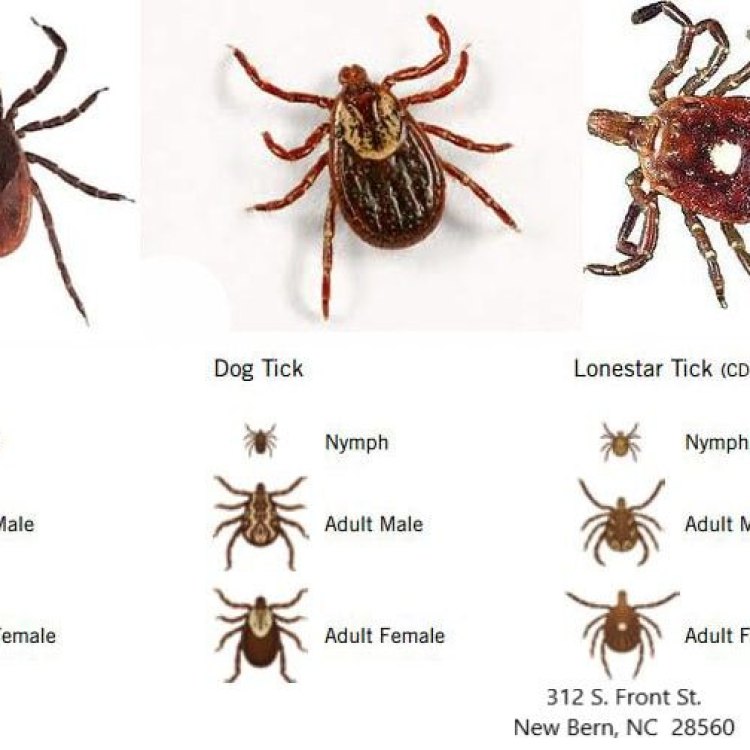
Pacific Coast Tick
- Adult Size: 10 to 12 mm (engorged)
- Average Lifespan: Approximately 2 years
- Reproduction: Sexual
- Reproductive Behavior: Mating occurs on the host
- Sound or Call: None
- Migration Pattern: Non-migratory
- Social Groups: Solitary
- Behavior: Ambushes hosts by climbing on vegetation
- Threats: Transmits diseases to animals and humans
- Conservation Status: Not evaluated
- Impact on Ecosystem: May affect population dynamics of hosts
- Human Use: None
- Distinctive Features: Ornate scutum pattern
- Interesting Facts: Pacific Coast Ticks are important vectors for the transmission of pathogens, including Anaplasma phagocytophilum and Borrelia burgdorferi, which cause human illnesses such as human granulocytic anaplasmosis (HGA) and Lyme disease, respectively.
- Predator: Various insect predators
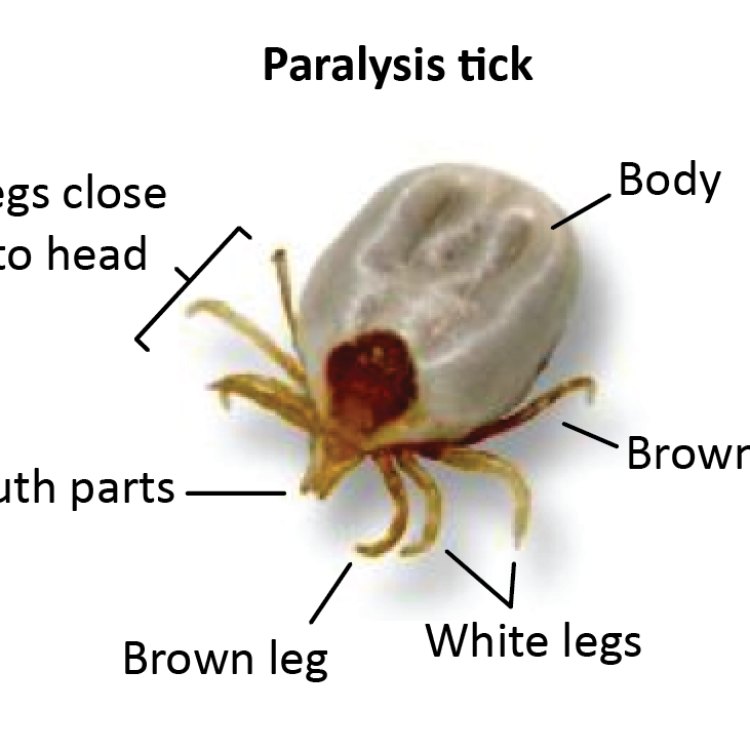
Dermacentor occidentalis
The Powerful and Mysterious Pacific Coast Tick
Imagine walking through a lush forest, surrounded by tall trees, chirping birds, and small critters scurrying around. As you take in the beauty of nature, you spot a small, seemingly harmless creature crawling on a nearby branch. But little do you know, this tiny being is a powerful and mysterious creature known as the Pacific Coast Tick.The Pacific Coast Tick, or scientifically known as Dermacentor occidentalis, is a formidable arachnid with little information available about its fascinating lifestyle PeaceOfAnimals.Com. Found primarily along the west coast of North America, this tick's distinctive features and unique behavior make it a crucial part of the ecosystem and a potential threat to animals and humans alike.
Let's dive deep into the world of the Pacific Coast Tick, explore its features, behavior, and impact, and uncover the mystery behind this small yet mighty creature.
Tiny Yet Mighty: The Physical Features of the Pacific Coast Tick
The first thing that comes to mind when we hear the word "tick" is usually its size. And while the Pacific Coast Tick is indeed tiny, measuring only 10 to 12 mm when engorged, its small body is packed with powerful features.One of the most distinctive features of the Pacific Coast Tick is its ornate scutum pattern, also known as the hard outer covering of the tick's back. It has a unique design, with dark brown stripes and patches on a cream-colored background, making it easily recognizable among other tick species. This distinctive feature can help differentiate it from other ticks, while also serving as a form of camouflage in its natural habitat.
Apart from its scutum pattern, the Pacific Coast Tick has eight legs, like any other arachnid. Its body is flat and oval-shaped, allowing it to easily maneuver through dense vegetation and reach hosts Plymouth Rock Chicken. It also has a sharp, needle-like mouthpart, known as the hypostome, which it uses to attach itself to its host's skin and feed on their blood.
On average, the Pacific Coast Tick has a lifespan of approximately two years, which is longer than most other tick species. During this time, it goes through four life stages – egg, larva, nymph, and adult – and feeds on different hosts at each stage. With its elusive behavior and varied life stages, studying the Pacific Coast Tick's biology has proved to be a challenging task.
Sexual Reproduction, Solitary Living: The Reproductive Behavior of the Pacific Coast Tick
Like most other arachnids, the Pacific Coast Tick also reproduces sexually. This means that males and females come together to mate and produce offspring. However, unlike other ticks, the Pacific Coast Tick's mating behavior is quite unique.Instead of finding a mate in the environment, the Pacific Coast Tick prefers to mate directly on its chosen host. This behavior is known as "mating on the host," and it serves as a survival tactic for the tick. By mating on the host, the Pacific Coast Tick ensures that its offspring will have a ready food source immediately after hatching.
After mating, the female Pacific Coast Tick detaches herself from the host and lays her eggs in the environment, usually in leaf litter or other moist places. These eggs hatch into tiny larvae that attach themselves to small animals such as rodents, rabbits, and birds, to feed and grow into nymphs. The nymphs then molt into adults, and the cycle repeats.
An Ambush Predator: The Behavior of the Pacific Coast Tick
The Pacific Coast Tick has a solitary lifestyle, meaning that it prefers to hunt and feed alone. But don't be fooled by its solitary nature; this tick is an efficient hunter.With its flat and compact body, the Pacific Coast Tick is an expert at hiding and ambushing its hosts. It climbs onto vegetation and waits patiently for potential hosts to pass by. Once a host brushes against the vegetation, the tick quickly latches onto its skin, using its sharp mouthpart to attach itself.
This behavior is particularly dangerous because the Pacific Coast Tick is known to be a generalist feeder, meaning it can feed on a wide range of hosts, including humans. This makes it a potential threat, not just to animals, but also to humans who come into contact with it.
The Silent Carrier: The Pacific Coast Tick's Impact on Ecosystem and Health
While most ticks are known for their painful bites, the Pacific Coast Tick is unique in its ability to transmit diseases silently. As a vector, the Pacific Coast Tick carries and transmits pathogens, such as bacteria and viruses, to its hosts, including animals and humans.One of the most well-known diseases that the Pacific Coast Tick is associated with is Lyme disease. This bacterial infection is caused by the bacterium Borrelia burgdorferi and can cause a range of symptoms, including fever, fatigue, and joint pain. Another disease that the Pacific Coast Tick transmits is human granulocytic anaplasmosis (HGA), caused by the bacterium Anaplasma phagocytophilum. Both these diseases can have severe health consequences and require medical attention.
Moreover, the Pacific Coast Tick's presence in a specific ecosystem can have an impact on the population dynamics of its hosts. As a generalist feeder, it can easily switch between different hosts, causing an imbalance in the ecosystem. This phenomenon has been observed in small mammals, where the overabundance of the Pacific Coast Tick has led to a decline in their population.
As for its conservation status, the Pacific Coast Tick has not been evaluated, primarily due to the lack of information about its population and distribution. With its importance as a vector for diseases, there is a need for further research and monitoring to understand its impact on both the ecosystem and human health.
The Fascinating and Dangerous Pacific Coast Tick: A Tick Like No Other
From its unique behavior to its distinctive features, the Pacific Coast Tick stands out among other tick species. Its solitary lifestyle, ornate scutum pattern, and efficient hunting techniques make it a formidable creature in the wild. But with its ability to transmit diseases silently, it is also a potential danger to animals and humans.Despite the Pacific Coast Tick's importance and potential impact, there is still so much to discover about this mysterious creature. With ongoing research and conservation efforts, we may uncover more about its life cycle, behavior, and impact on the ecosystem and human health. Until then, let's admire this tiny yet mighty tick from a safe distance and appreciate the role it plays in the delicate balance of nature.
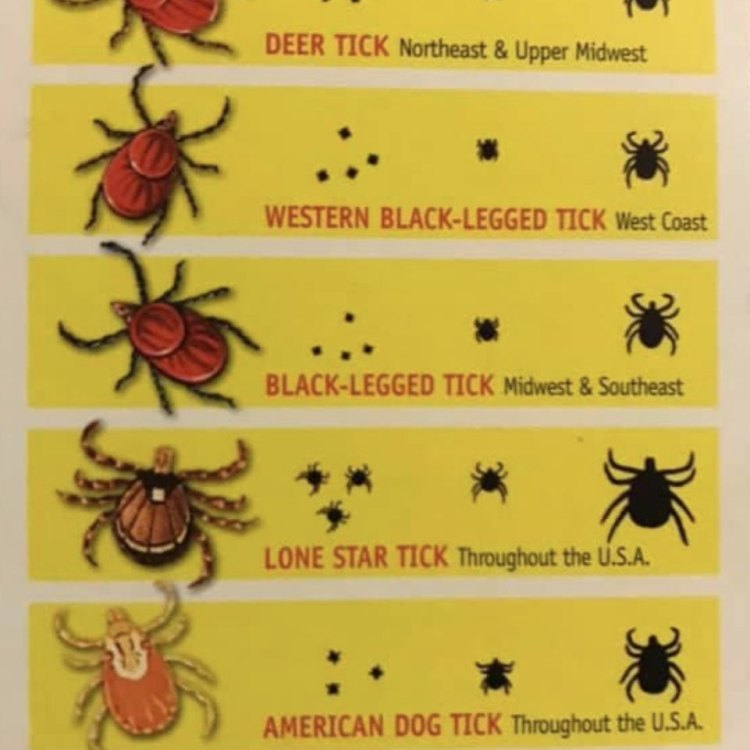
The Hidden Jewel of the Pacific Coast - The Pacific Coast Tick
Disclaimer: The content provided is for informational purposes only. We cannot guarantee the accuracy of the information on this page 100%. All information provided here may change without prior notice.



